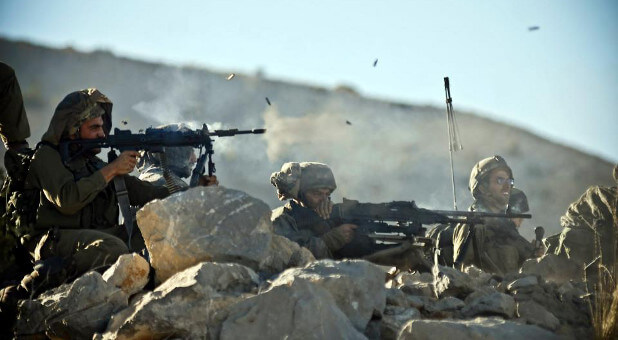The Israel Defense Force’s Ground Forces Command has revealed a state-of-the-art battle laboratory integrating the latest simulation technology to create life-like operational scenarios. By accurately representing enemy figures, weapons and territory, the new system—which was unveiled last month—allows for the simulation of company-sized operations without the danger of a live-fire exercise.
Earlier this month, soldiers of the Givati Brigade’s Anti-Tank Company took part in an innovative simulation held entirely at the new laboratory, entailing the integrated use of an extensive range of military equipment in combat.
In preparation for the actual simulation—a life-like military operation in enemy territory—the soldiers first spent two intensive days studying the mission’s objectives and the method of operating the simulators.
Together with officials from the Military Research and Light Arms Departments, the soldiers then began carrying out the simulation—six scenarios every day, lasting an average of 40 minutes each, until the targets were destroyed and the operation’s objectives achieved.
Before each scenario, the Battalion Commander planned the coming mission’s strategy and then gave the order to the Company Commander. Then the scenario began, each soldier manned one of the posts for which he had been trained, and a large clock began to run.
The level of difficulty was increased from scenario to scenario.
“The idea is to perform as many scenarios as possible to see that we will get the same results and statistical significance,” said Cpt. Itai, the officer from the Light Arms Department commanding the simulation. “In the next scenario, we’ll add more enemy fighters to the mission, we’ll upgrade (the enemy’s] weapons and maybe we’ll bring them closer to our soldiers. It is necessary to change the scenarios slightly each time in order to challenge the soldiers.
“In the coming scenarios, we’ll use a weak enemy—he needs to shoot 10 rockets in order to kill us. But if I see during the trial that there is a squad that isn’t behaving properly, then I strengthen the enemy.”
At the end of each scenario, the participants gathered in a discussion room for processing, and what happened in the simulation was broadcast on a television screen from every angle, as they discussed what had occurred. The discussion between the officers and soldiers took place in an open manner so that all participants would learn from each other.
The Military Research Department developed the simulators with the intention of making simulations more realistic. The simulators accurately replicate all details—houses, vehicles and the manner in which the enemy responds to assaults. If an IDF soldier is wounded by enemy fire, he exits his seat and leaves the simulation room to begin the debriefing in order to understand how to perform better next time on the battlefield.
Click here for the original article at idf.il.
















































